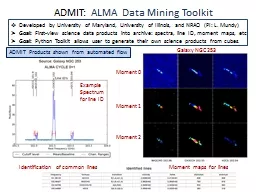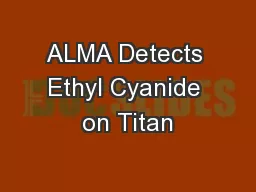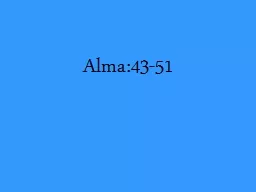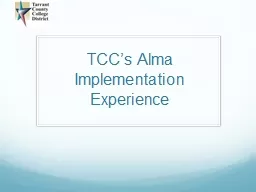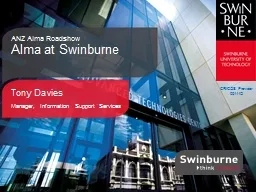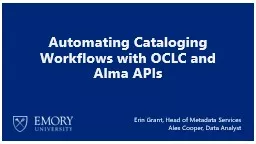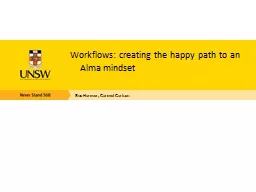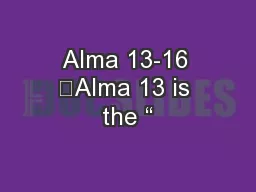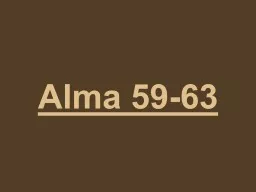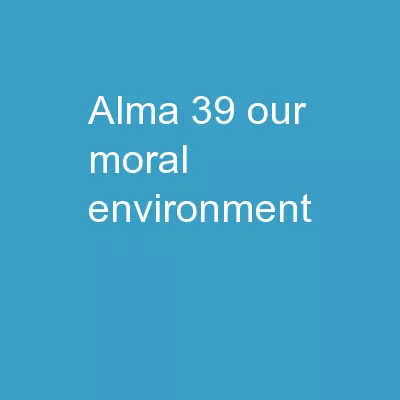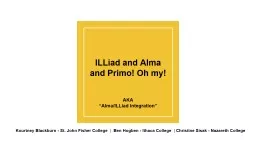PPT-ADMIT: ALMA Data Mining Toolkit
Author : envrrolex | Published Date : 2020-06-18
Developed by University of Maryland University of Illinois and NRAO PI L Mundy Goal Firstview science data products into archive spectra line ID moment maps etc
Presentation Embed Code
Download Presentation
Download Presentation The PPT/PDF document "ADMIT: ALMA Data Mining Toolkit" is the property of its rightful owner. Permission is granted to download and print the materials on this website for personal, non-commercial use only, and to display it on your personal computer provided you do not modify the materials and that you retain all copyright notices contained in the materials. By downloading content from our website, you accept the terms of this agreement.
ADMIT: ALMA Data Mining Toolkit: Transcript
Download Rules Of Document
"ADMIT: ALMA Data Mining Toolkit"The content belongs to its owner. You may download and print it for personal use, without modification, and keep all copyright notices. By downloading, you agree to these terms.
Related Documents

